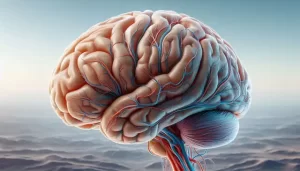Does the child still need radiotherapy after resection of brain tumor?
- A Persistent Crisis: The Looming Specter of Drug Shortages in United States
- Rabies: The fatality rate nearly 100% once symptoms appear
- Human Brain Continues to Grow: Study Shows Increase in Size and Complexity
- CRISPR Genome Editing: From Molecular Principles to Therapeutic Applications
- Metformin Helps Immune System Better Recognize Cancer Cells
- Highlights of Prostate Cancer Research at the 2024 EAU Congress
Does the child still need radiotherapy and chemotherapy after resection of brain tumor?
Does the child still need radiotherapy after resection of brain tumor? For malignant tumors, according to the degree of malignancy, some follow-up treatments need to be done after the operation. Under the guidance of the surgeon, it is necessary to go to the corresponding oncologist to see a doctor and formulate a follow-up treatment plan.
The treatment of brain tumors in children depends on the type, size and location of the tumor, as well as the child’s age and overall health. For most brain tumors in children, surgery is the first step.
In some cases, the tumor is small and easily separated from the surrounding brain tissue, which makes complete surgical resection possible. In other cases, tumors cannot be separated from surrounding tissues, or they are located near sensitive areas of the brain, which makes surgery risky.
In this case, the pediatric neurosurgeon will remove as much of the tumor as possible. Parents who have completely removed the tumor will have such doubts: After the operation is completed, the treatment will be successful? Do you need other treatments?
For children’s brain tumors, there are only a few benign tumors, such as choroid plexus papilloma, Rathke cyst, etc. After the operation is completed and the lesions are completely removed, only regular review is required.
But for some other common tumors, glioma, medulloblastoma, craniopharyngioma, etc. usually require comprehensive treatment.
Glioma in children
Glioma in children (Glioma) is the most common central nervous system tumor in children and adolescents, accounting for 40% to 60% of all intracranial tumors in children. Glioma originates from glial precursor cells in the brain and spinal cord. According to the classification of brain tumors by the World Health Organization (WHO), gliomas are divided into low-grade (grade I and II) and high-grade (grade III and IV) tumors. Its clinical manifestations are very extensive.
Most gliomas in children are benign and slow-growing lesions, and they are classified as Grade I or Grade II by the WHO. These children’s low grade gliomas (Low grade Glioma, LGG) are fundamentally different from adult LGG, they are less likely to undergo malignant transformation and have a good overall survival rate. However, a considerable number of gliomas develop rapidly in a short period of time. WHO grade III or IV (High grade Glioma, HGG) is basically incurable and can even be fatal within a few months.
The treatment of pediatric glioma requires multidisciplinary cooperation such as neurosurgery, imaging, pathology, radiotherapy, medical oncology, and neurorehabilitation, and follows the principles of evidence-based medicine. The goal is to improve the daily management of children with glioma, and Patients undergo long-term follow-up observation to improve the quality of life and prevent the long-term sequelae of LGG. Efforts to find effective treatment methods for HGG patients and adopt standardized and individualized comprehensive treatment measures to achieve the best treatment effect and prolong the progression-free survival (PFS) and overall survival (OS) of the children as much as possible.
Medulloblastoma in children
Medulloblastoma (Medulloblastoma, MB) is also a common intracranial malignant tumor in children. Its cell morphology is similar to embryonic medulloblastoma, so it is named after it. MB accounts for about 20% of childhood central nervous system tumors, with an incidence rate of 0.2 to 0.58 per 100,000, with slightly more males than females. There are two peaks of medulloblastoma, which are 3 to 4 years old and 8 to 10 years old. The vast majority of medulloblastomas are sporadic cases, and less than 5% of children with medulloblastoma are related to familial genetic diseases, including familial adenomatous polyposis (FAP), nevi-like basal cell carcinoma Syndrome (nevoid basal cell carcinoma syndrome, NBCCS). Medulloblastoma originates from the cerebellum or brainstem and is prone to spread and metastasize through the cerebrospinal fluid.
The purpose of surgical treatment is to remove the tumor, confirm the diagnosis, and rebuild the cerebrospinal fluid circulation as safely as possible. The principle of surgical treatment is to achieve the maximum resection of the tumor without damaging normal brain tissue. Radiotherapy should be started as soon as possible after surgery. It is recommended to start radiotherapy within 4 weeks after surgery. Delayed radiotherapy is associated with poor prognosis. The prognosis of children with radiotherapy later than 49 days is significantly poor. Vincristine can be given weekly during radiotherapy. Patients under 3 years of age with standard risk do not receive radiotherapy, and patients under 3 years of age at high risk receive local tumor bed radiotherapy or palliative radiotherapy after radiotherapy or chemotherapy after delayed until 3 years of age.
System chemotherapy:
1. Age ≥ 3 years: Adjuvant chemotherapy will be started 4 weeks after the end of radiotherapy. The chemotherapy regimen can choose lomustine+cisplatin+vincristine regimen, or cyclophosphamide+cisplatin+vincristine regimen, a total of 8 courses.
2. Age <3 years: Start adjuvant chemotherapy 2 to 4 weeks after surgery. Alternative chemotherapy options include cyclophosphamide+vincristine/high-dose methotrexate/carboplatin+etoposide for a total of 12 courses.
3. High-dose chemotherapy combined with stem cell rescue treatment. If conditions permit, high-risk patients can be treated with ultra-high-dose chemotherapy with the support of autologous hematopoietic stem cells.
Craniopharyngioma in children
Even though craniopharyngiomas are complicated adjacently, the complete resection is difficult, traumatic, and the incidence of complications is high, surgery is still the most important treatment for craniopharyngiomas, which fully protects pituitary-hypothalamic function and visual pathway Actively pursuing total resection under the premise is the basis for ensuring the long-term survival of patients.
After surgery, the endocrine function of the child still needs to be reviewed regularly, and continuous review, and drug adjustments should be made according to the results, because although craniopharyngioma is a benign tumor, it will have a profound impact on the endocrine function of the child. After the operation, the neuroendocrine axis is disturbed to varying degrees, and hypothyroidism, low cortisol, insufficient growth hormone and sex hormone secretion may occur, which affects the growth and development of children, so interdisciplinary guidance from endocrinologists and neurosurgeons is required , Carry out a comprehensive dynamic adjustment.
In short, for malignant tumors, according to the degree of malignancy, some follow-up treatments need to be done after the operation. Under the guidance of the surgeon, it is necessary to go to the corresponding oncologist to see a doctor and make a follow-up treatment plan.
(source:internet, reference only)
Disclaimer of medicaltrend.org
Important Note: The information provided is for informational purposes only and should not be considered as medical advice.



